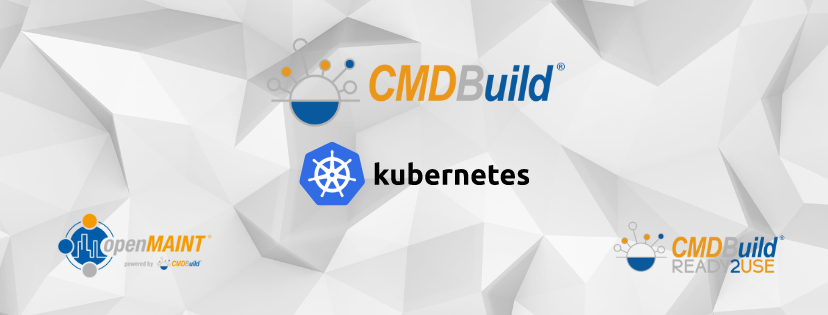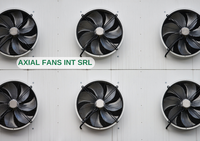- CMDBuild Work In Progress
- CMDBuild and Kubernetes
- openMAINT Reference & Case Study: Axial Fans International srl
- Tecnoteca webinars
CMDBuild Work In Progress

The CMDBuild development team is currently working on advancing important developments and improvements in the upcoming versions of the software.
The next CMDBuild 3.4.4 version, scheduled for the summer period, will primarily focus on resolving bugs and improvements reported by users. Our main goal is to ensure greater stability and reliability of the product.
However, our greatest commitment and attention are directed towards version 4 of CMDBuild, which will bring several innovative features. As already anticipated in previous newsletters, version 4 promises to further enhance the use of CMDBuild.
In this newsletter, we would like to delve into one aspect that our technicians are working on: integration with Kubernetes.
CMDBuild and Kubernetes

In the increasingly complex context of IT resource management, tools like Kubernetes stand out for their ability to simplify and automate critical processes.
Kubernetes is a container orchestration system, known for its scalability, automation, and simplified application management. Its modular architecture enables efficient deployment of containerized applications across different infrastructures.
Currently, we are working on installing CMDBuild on Kubernetes and integrating Kubernetes into CMDBuild READY2USE.
Installing CMDBuild on Kubernetes
We are making modifications to our product to make it installable on a Kubernetes infrastructure. This integration offers several advantages, including:
- Scalability and Flexibility: Kubernetes enables dynamic scalability, allowing CMDBuild to adapt to changing business needs.
- Simplified Management: Thanks to Kubernetes' simplified management of infrastructural resources, administrators can focus on configuring and managing CMDBuild.
Integration of data into CMDBuild READY2USE
We are updating the data model of CMDBuild READY2USE to include management of Kubernetes infrastructure information, such as Clusters, Nodes, Workloads, Pods, and Services. Additionally, we are developing a connector for automatic data updates.
This integration will provide a unified view of IT resources, facilitating more efficient management and better understanding of the corporate IT environment.
openMAINT Reference & Case Study: Axial Fans International srl
 Axial Fast International is an Italian Company founded in year 2009 and is a leading global company providing axial fans and services to the cooling industries worldwide.
Axial Fast International is an Italian Company founded in year 2009 and is a leading global company providing axial fans and services to the cooling industries worldwide.
The axial fans are used in industrial applications, related to air-cooling systems, such as cooling towers or air fin heat exchangers. In particular, the company is specialized in low noise and high efficiency solutions.
The patented products are installed in thousands of applications and operate in critical environments and challenging climates.
The fans are mainly installed in cooling plants located at refineries, petrochemical plants, power stations, etc., locations where there are many fans which must be constantly monitored and managed remotely.
There is therefore the need for a cloud-based software tool, accessible simultaneously by several remote users, which can record and catalogue large amounts of data and information, to improve the management of the fans installed at the plant.
The software selected for this purpose was openMAINT, and the main reasons for this choice have been the following: the software has a lot of features already available by default and different typologies of data can be managed, is also flexible and can be fully customized according to specific requirements, can be adapted to different contexts of use.
Regarding the project implementation, initially we worked on the Data Management section and we implemented our data model (“Building” --> “Cooling Tower” --> “Cell CT” --> “Fan CT”, “Transmission CT”, “Shaft CT”, “Motor CT”; “Air-cooled Condenser” --> “Cell AC” --> “Fan AC”, “Transmission AC”, “Shaft AC”, “Motor AC”), defining specific data cards with related attributes, considering the attributes already present in openMAINT and adapting them for each database component.
Some cards contain a lot of data, for example in the case of the IQ Condenser the measurements that are carried out during maintenance and replacement of the fans are reported. Thanks to an openMAINT feature, it is possible to know in a glance the current status of the interventions, by displaying via a checklist the list of cells for which the interventions have already been carried out. Using another native function of the application, present in the measurement section, it is then possible to display a graph of measurements in an automatic manner, by selecting the asset and the type of measurement desired. It is therefore possible to display the trend of the measurements over time and see all the measurements that have been performed.
Regarding the Maintenance Management section of the software, there are two sections. The first one manages the Corrective Maintenance, so the reporting of the failures that can occur; it is possible to report a fault in real time and update all users via email notifications, specifying which asset or component is involved. The second section manages the Preventive Maintenance; here it is possible to have an internal calendar, shared by all the users, in which recording the scheduled interventions, so specifying the type of activity that will be performed, the asset involved, the technical teams, the estimated duration of the machine downtime, etc. At the completion of the activity, it is possible to make a report. Thanks to another openMAINT feature, it is possible to establish a list of activities that must be performed during the intervention, through a predefined checklist. In this way, the operator can easily follow the checklist, reporting the values of the measurements, flagging the positive or negative outcome of the activity, etc. and reducing the possibility of forgetting something that must be done. After filling out the checklist, it is then possible to automatically print the report of the intervention and add some tables or graphs.
Another important characteristic of openMAINT is the possibility of efficiently managing the accesses of the various users, having different roles, permissions, privileges on the database view, through the functionality of the multi-tenant.
In conclusion, we list some benefits that we have identified in the use of the openMAINT solution: consistent information storage and data always updated, accessibility (by different users located in different parts of the world), easy identification of spare parts (with every level of detail within the software), maintenance management (with real time reports), accurate monitoring of energy consumption, downtime reduction (efficiently programming maintenance interventions, coordinating the availability of the various teams), increase of plant availability and reliability, improve of communication between maintenance teams (possibility of sending the automatic messages and alerts when a failure occurs or once the maintenance activity is concluded).
Tecnoteca webinars
 On February 29th, a webinar dedicated to presenting the most relevant features of CMDBuild 3.4.3 version was held.
On February 29th, a webinar dedicated to presenting the most relevant features of CMDBuild 3.4.3 version was held.
If you didn't have the opportunity to participate in the webinar, you can watch it by visiting the event page.
Please note that webinar videos are always available on our Tecnoteca.tv portal.


